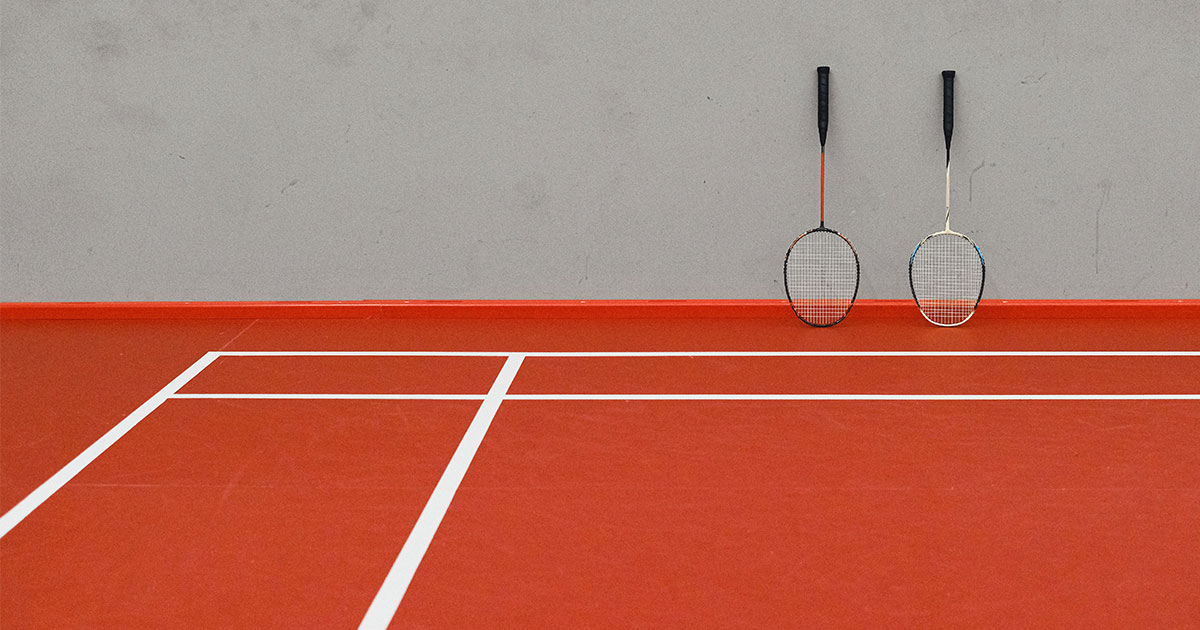Badminton is a sport that originated in ancient India and has now become a worldwide phenomenon. It is a sport that is played both indoors and outdoors, but the majority of the tournaments and games are played indoors. In this article, we will discuss the reasons why badminton is an indoor sport and why it has gained such immense popularity over the years.
Introduction
Badminton is a racquet sport that is played with a shuttlecock and a net. The objective of the game is to hit the shuttlecock over the net and into the opponent’s court, without letting it touch the ground. The game can be played both as a singles or doubles, and the court can be played in both indoor and outdoor environments. However, the majority of the games and tournaments are played indoors, and this article aims to explore why that is the case.
History of Badminton
The origins of badminton can be traced back to ancient India, where a game called Poona was played with a shuttlecock and racquet. The game was later introduced to England in the 19th century and gained immense popularity. It was during this time that the name badminton was coined, after the Duke of Beaufort’s Badminton House, where the game was played.
The Advantages of Playing Badminton Indoors
There are several advantages to playing badminton indoors. Firstly, playing indoors eliminates the impact of external weather conditions such as wind, rain, or sun, which can significantly affect the game’s quality. Secondly, the court’s surface is often made of synthetic materials, providing a consistent and predictable surface for the players. This allows for better and more consistent gameplay, making the game more enjoyable for the players and spectators alike.
The Influence of Shuttlecock
The shuttlecock is an essential component of badminton, and its design is such that it is more suited for indoor play. The shuttlecock’s shape and weight are optimized for indoor play, as it is designed to be more stable in indoor environments. The shuttlecock’s feathers also require a consistent temperature and humidity level, which is more easily maintained indoors.
The Popularity of Indoor Badminton
The majority of badminton tournaments and games are played indoors, making it an indoor sport. This has led to the development of a massive indoor badminton community worldwide. The indoor environment allows for the creation of professional-level courts, which are ideal for hosting tournaments and competitions.
The Role of Technology
The advancement of technology has played a significant role in the growth of indoor badminton. Modern-day courts are equipped with state-of-the-art lighting systems that provide optimum visibility for players and spectators. These lighting systems are designed to reduce glare and shadow, which can affect gameplay.
The Competitive Nature of Indoor Badminton
Indoor badminton is a highly competitive sport, with players competing at both amateur and professional levels. The sport requires a high level of skill, agility, and endurance, making it a challenging and exciting sport to play. The competitive nature of the sport has led to the development of advanced training facilities, coaches, and equipment.
The Social Aspect of Indoor Badminton
Indoor badminton is not only a competitive sport but also a social one. It provides an opportunity for players to meet new people, socialize, and form lasting friendships. The sport is also a popular choice for recreational activities, with many community centers and sports clubs offering indoor badminton facilities.
The Health Benefits of Indoor Badminton
Playing indoor badminton has numerous health benefits. It is an excellent cardiovascular exercise, improving heart and lung health. It also helps in burning calories, improving muscle strength and endurance, and enhancing flexibility and coordination. It is also a low-impact sport, making it an excellent option for individuals with joint problems.
Conclusion
In conclusion, badminton is a sport that is played both indoors and outdoors. However, the majority of the games and tournaments are played indoors due to various advantages, such as eliminating the impact of external weather conditions, providing a consistent and predictable surface, and the influence of the shuttlecock. Indoor badminton has gained immense popularity worldwide, with the advancement of technology, the competitive nature of the sport, and the numerous health benefits it offers.
FAQs
- Is badminton only played indoors?
No, badminton can be played both indoors and outdoors.
- What is the size of a standard badminton court?
A standard badminton court is 44 feet long and 20 feet wide for doubles, and 17 feet wide for singles.
- What equipment do I need to play indoor badminton?
You will need a badminton racquet, shuttlecock, and appropriate footwear.
- How many calories can I burn playing indoor badminton?
On average, you can burn around 350-450 calories per hour playing indoor badminton.
- Is indoor badminton suitable for all age groups?
Yes, indoor badminton can be played by individuals of all ages and skill levels. It is a low-impact sport, making it an excellent option for older adults or individuals with joint problems.

